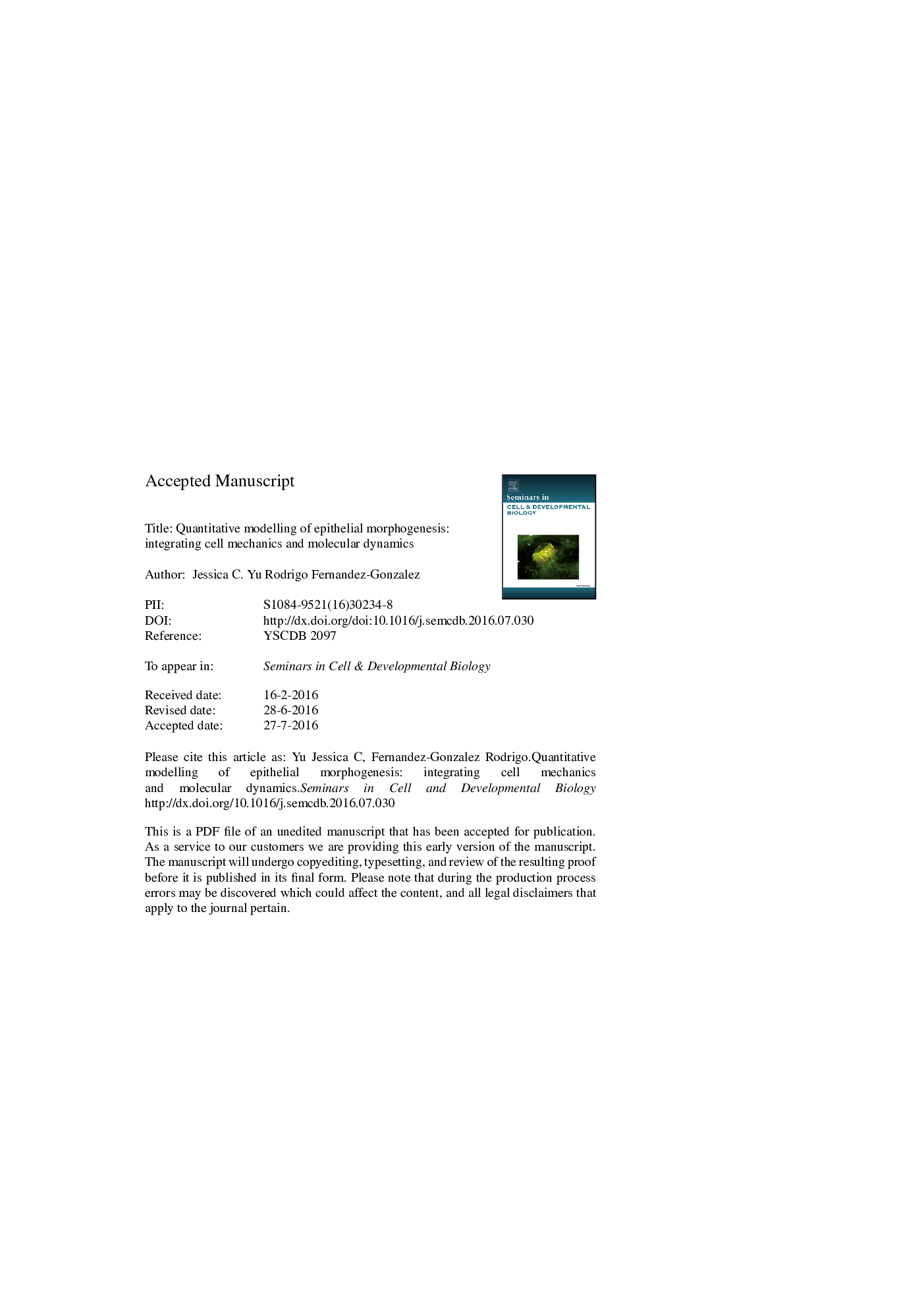| Article ID | Journal | Published Year | Pages | File Type |
|---|---|---|---|---|
| 5534908 | Seminars in Cell & Developmental Biology | 2017 | 34 Pages |
Abstract
Epithelial tissues form and repair in complex processes influenced by molecular and physical factors. Recent years have witnessed the development of new microscopy modalities that push the limits of spatial resolution, and enable long-term monitoring of developing animals. Increasingly, methods from the physical sciences are used to investigate the role of mechanical forces in living organisms. The application of these new technologies to developmental biology has led to ever-expanding volumes of data that must be interpreted and integrated. For these reasons, computer models are being applied to investigate tissue morphogenesis. Here, we discuss the use of vertex models to study the morphogenesis of epithelial tissues. We motivate the use of computational models and consider their advantages and limitations. We provide an introduction to the theoretical foundation of vertex models and describe how they can integrate mechanical and biochemical dynamics. Finally, we review recent advances in the application of vertex models to investigate dorsal closure, a morphogenetic process in the Drosophila embryo with parallels to both embryonic development and wound repair in vertebrate organisms.
Related Topics
Life Sciences
Biochemistry, Genetics and Molecular Biology
Cell Biology
Authors
Jessica C. Yu, Rodrigo Fernandez-Gonzalez,
